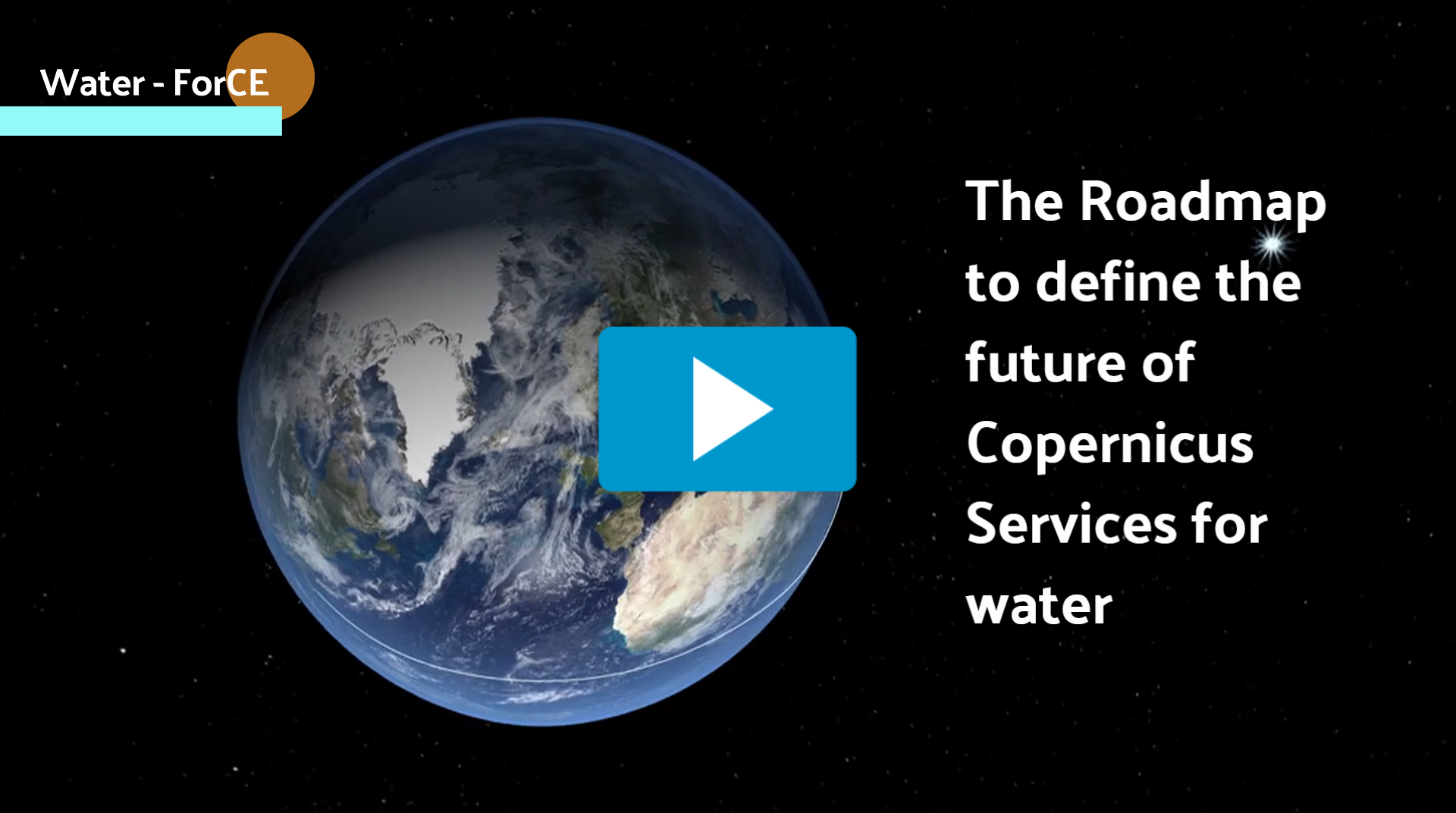A Roadmap for the future of Copernicus for Water
The Roadmap analyses the current state-of-the-art in the inland water domain of the Copernicus Services and gives recommendations on how to move forward to maximise the benefits from the Services. It is expected that the future Copernicus Services should enable to understand the water cycle as a whole, support development and implementation of water related legislation in the EU, support achieving the Sustainable Development Goals and the implementation of the System of Environmental Accounting, as well as boosting climate adaptation and European markets.
Gathering the internal expertise of 20 partners and by engaging over 800 current and potential users and stakeholders, the Water-ForCE project delivers the following:
- An assessment of the current water-related service elements offered by the Copernicus Services.
- The identification of the bottlenecks limiting the success of the Copernicus Services in the inland and near-coastal water domain.
- An analysis of the potential of four scenarios for reaching the expected impacts raised by the European Commission and solving the bottlenecks identified by Water-ForCE.
- A series of recommended actions that should improve the performance of the Copernicus Services in the water domain.
What are the expected benefits of Copernicus for Water?
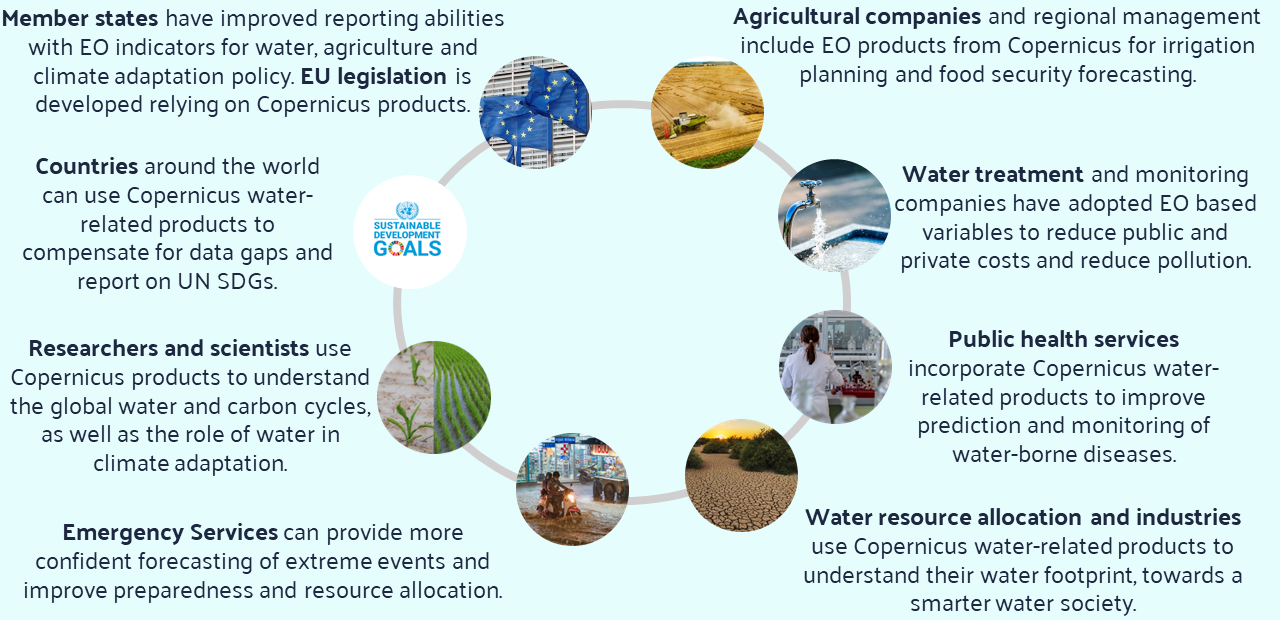
Bottlenecks to uptake
The analysis of the current Copernicus Services and extensive user consultations performed by Water-ForCE revealed several bottlenecks that are stalling the progress of Copernicus water-related services across user and policy domains.
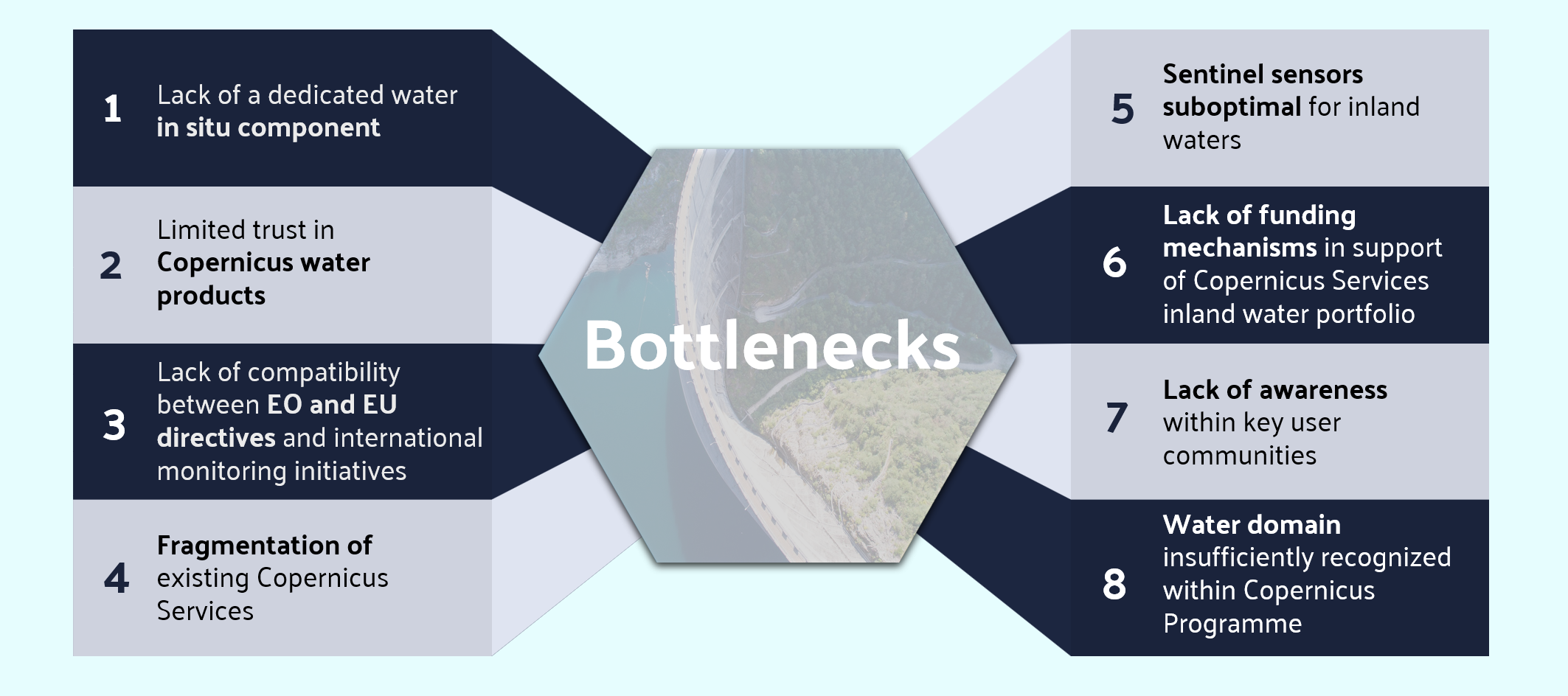
More detailed information about the bottlenecks can be found in the Roadmap and relevant project deliverables in the Water-ForCE community at zenodo.org or in the official CORDIS website.
Scenarios for the future of Copernicus for Water
There are different pathways to achieve the expected impacts listed by the European Commission in the Space call and to solve the bottlenecks identified by the Water-ForCE consortium. We performed a SWOT analysis of four scenarios. They differ from each other depending on the potential to accomplish the expected impacts and solving the bottlenecks, but also on the speed of reaching the desired results. The Business as Usual and the Water Thematic Hub scenarios are already ongoing, although the Water Thematic Hub is only in plans.
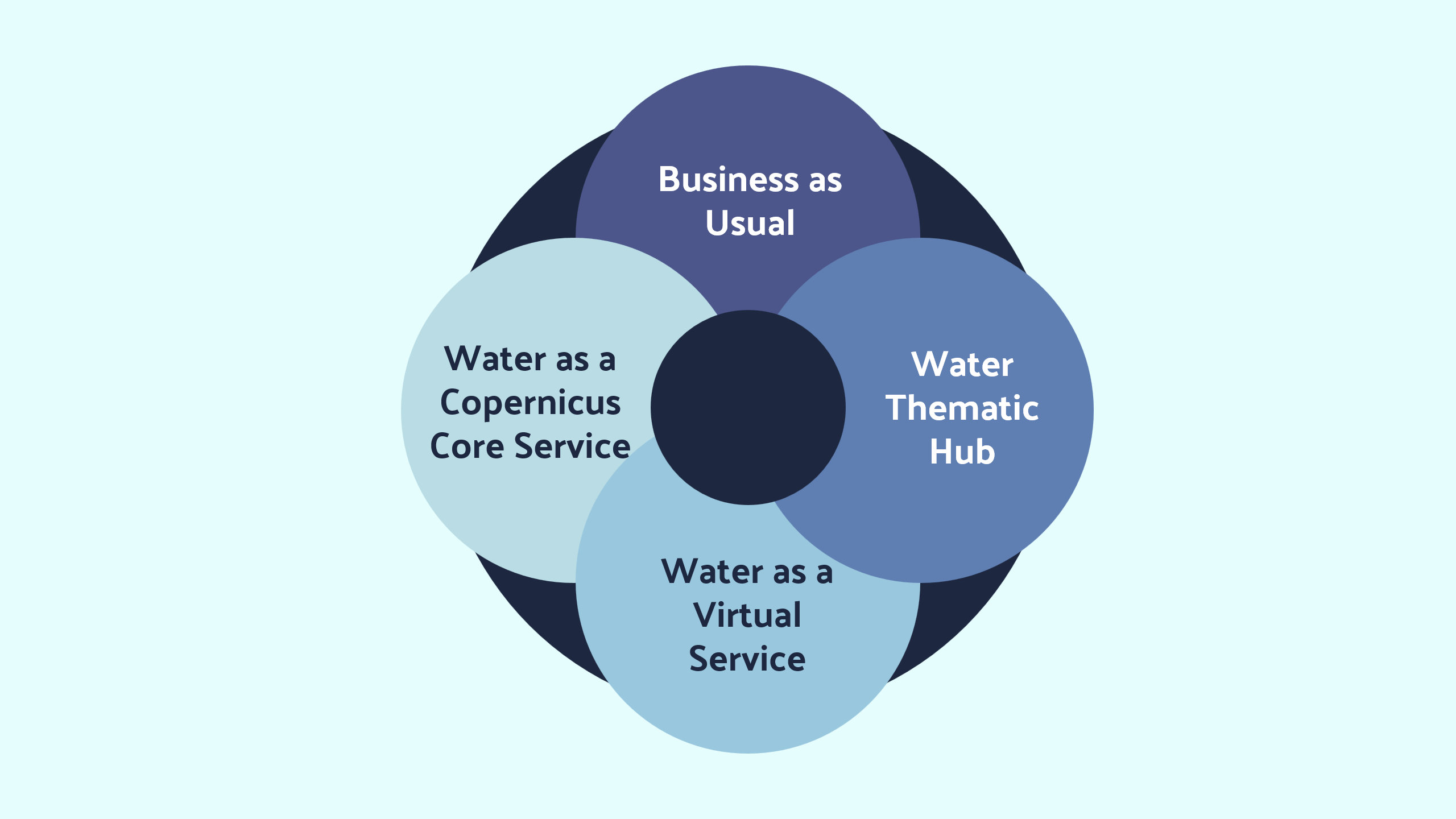
Business as Usual
This scenario implies that the evolution of Copernicus follows the path set in motion from the outset, with the six operational Services providing information about the Earth’s land, ocean, and atmosphere; monitoring climate change, supporting European emergency management and safeguarding civil security. Water related products are scattered among these Services. The SWOT analysis for this scenario assumes no change to this pathway. Most of the identified bottlenecks and expected impacts listed by the EC cannot be resolved.
Water Thematic Hub
The Hub concept is currently defined by the EC as “a single entry point to existing products”. Such data portal may be useful in water quantity domain, where more than 800 products are delivered by different Copernicus Services. However, it may add confusion in water quality domain, where only two inland water products exist. While this scenario may help address bottlenecks 4, 7, and 8, limited progress is anticipated in overcoming other bottlenecks or achieving the impacts outlined by the EC.
Water as a Virtual Service
Significant progress can be made if there is an entity responsible for coordinating and managing all water related activities (establishing an in situ component, achieving consistency of products (allowing to study water cycle as a whole and water quality as a continuum from inland to coastal waters), advocating for dedicated inland water satellites, etc.). The current legal framework allows six Services, and changing it requires agreement of all EU Member States. Therefore, it should be easier and faster to establish a virtual service under one of the existing Services in order to overcome all the bottlenecks.
Water as a Copernicus Core Service
The ultimate scenario is a dedicated Copernicus Water Service. It could be made by expanding one of the current Services, merging some of the existing services or establishing a new Service. The analysis of this scenario indicates potential to overcome all the bottlenecks and reach all the expected impacts listed by the EC in the Space call. However, opening the discussion about a new service will also imply the debate on reorganising the existing ones, as there are currently many thematic areas that may request to become a Service. This may create short term instability of the whole Copernicus Programme (although potentially a better Programme in the long term).
Recommendations
For the Copernicus programme to overcome the bottlenecks and realise its ambition within the water domain, the Water-ForCE consortium offer a series of recommended actions.
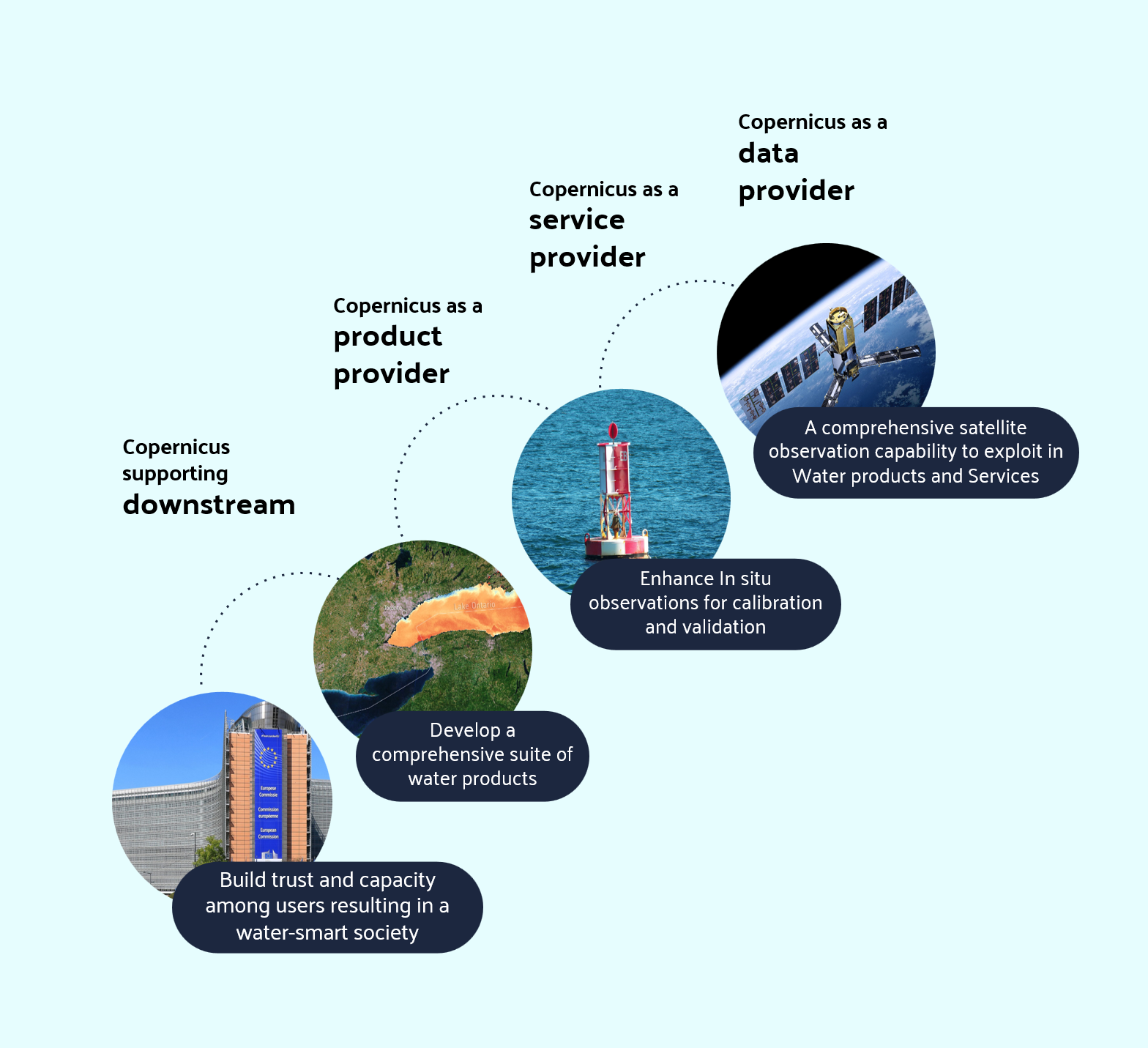
These recommended actions are independent of the scenario selected for the Copernicus Services, but the scenario selected influences the pace at which actions can be implemented. They are organised along the Copernicus value chain (Figure above) and on different timescales (see Roadmap for full list). Below are the firststeps required by the the European Commission, Member States and other decision-makers to begin the process.
Water-ForCE recommends:
- The Commission to use this Roadmap and the findings from Water-ForCE deliverables to conduct a cost-benefit analysis of the scenarios developed.
- EUSPA to consider the inclusion of Water as an identifiable market sector to fully comprehend the relevance of the EO water sector in Europe.
- The Commission to assess the list of products identified with high Technology Readiness at local scale and proposed measures that allow to validate the selected products at pan-European or global scale to include them in the Copernicus portfolio.
- The Commission to consider wider use of EO in general and Copernicus products in particular in developing and implementing EU legislation.
- Member States to champion the integration of EO and Copernicus products into national monitoring programmes.
- The Commission, Member States and the European Environment Agency to start to establish a taskforce that assesses the need to start collecting critical in situ data for product calibration and validation (e.g. establishing supersites) instead of relying on seldom data often not suitable for Copernicus needs.
- The Commission to elaborate the scenario analysis that includes the cost-benefit analysis (budgets) and political consiserations.

